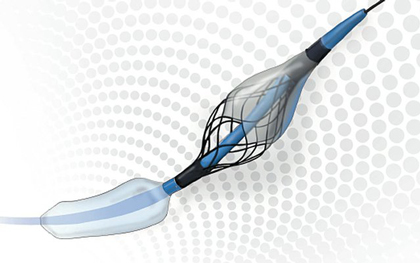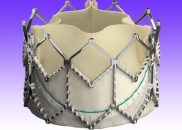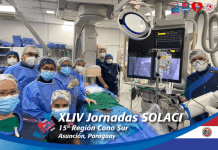TAVR has consolidated as an increasingly valid alternative to treat failed surgical aortic valve bioprostheses. One of the major challenges it presents is patients with small annuli treated with a surgical bioprosthesis. There is little data available about this scenario. A few observational studies have shown what appears to be a hemodynamic advantage of…
Surgical Bioprosthesis Deterioration: Is the Valve-in-Valve Technique a Good Option?
The use of surgical bioprostheses has significantly increased, and while they last 15 years or more, in cases where they fail (usually due to stenosis), the decision-making process is challenging. Transcatheter aortic valve replacement (TAVR) is a good alternative for this situation, although information on the subject matter is still scarce. Currently, the only available…
Combination of Percutaneous Suture Devices after TAVR to Reduce Vascular Complications
Current use of transcatheter aortic valve replacement (TAVR) has increased in intermediate-risk patients and has even been used in low-risk patients. Vascular access-related complications and bleeding are still frequent after transfemoral TAVR, being associated with poor short- and long-term outcomes. Using percutaneous closure devices has allowed operators to close the access site without surgery. The…
Non-Cardiac Surgery After TAVR Is Safe
There are increasingly more patients who have undergone transcatheter aortic valve replacement (TAVR) and require a non-cardiac intervention, or patients with other diseases who need surgery and are diagnosed with aortic stenosis. In addition, on many occasions, surgery must be performed as soon as possible (as in cases of cancer) or is an emergency procedure.…
The Latin American Group of Interventionist Women Performed 4 TAVR Cases in Paraguay
The MIL-SOLACI continues to grow and keeps developing activities to foster integration and women’s participation all across Latin America. IN this opportunity, and for the first time, the area directed by Dr. Carla Agatiello (ARG) performed 4 transcatheter aortic valve implantations (TAVR) at the National University’s Clinical Hospital of Asunción, in Paraguay. The interventions, performed…
TAVR, More Information Supports Its Use
TAVR has been reported beneficial in the treatment of high and intermediate risk patients but, initially, randomized clinical trials have shown vascular complication and pacemaker implantation rates higher than SAVR in low-risk patients. This will most certainly improve as operator experience and device development advance. This is a randomized 1:1 study including 458 patients receiving…
New-Generation ACURATE Neo2
Transcatheter aortic valve replacement (TAVR) is a therapeutical option for patients with symptomatic severe aortic stenosis. Current guidelines recommend TAVR in patients ≥75 years with intermediate risk. One of the most frequent complications of this procedure is moderate or greater aortic regurgitation (AR) after implantation. Consequently, new valves have been developed to try and reduce…
TAVR: If Not Transfemoral, We Should Consider Transcaval Access
Transcatheter aortic valve replacement (TAVR) through transfemoral access has already proven its great benefits, but this access cannot be used in certain patients, and alternative accesses need to be considered for such cases. One of the most commonly used accesses is the transaxillary or transubclavian access (AX), which, however, is associated with more complications (especially…
EuroPCR 2022 | Should Revascularization Be Performed Before TAVR in Patients with Stable Coronary Disease?
Currently, the American and European guidelines recommend coronary angioplasty in patients with severe aortic stenosis with lesions >70% (Class IIa) who will undergo transcatheter aortic valve replacement (TAVR). However, the benefit of performing a revascularization in these patients is still uncertain. This prospective multicenter study included 2025 patients divided into two groups: complete revascularization (N = 1310)…









